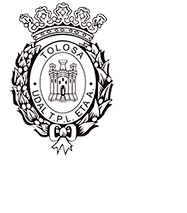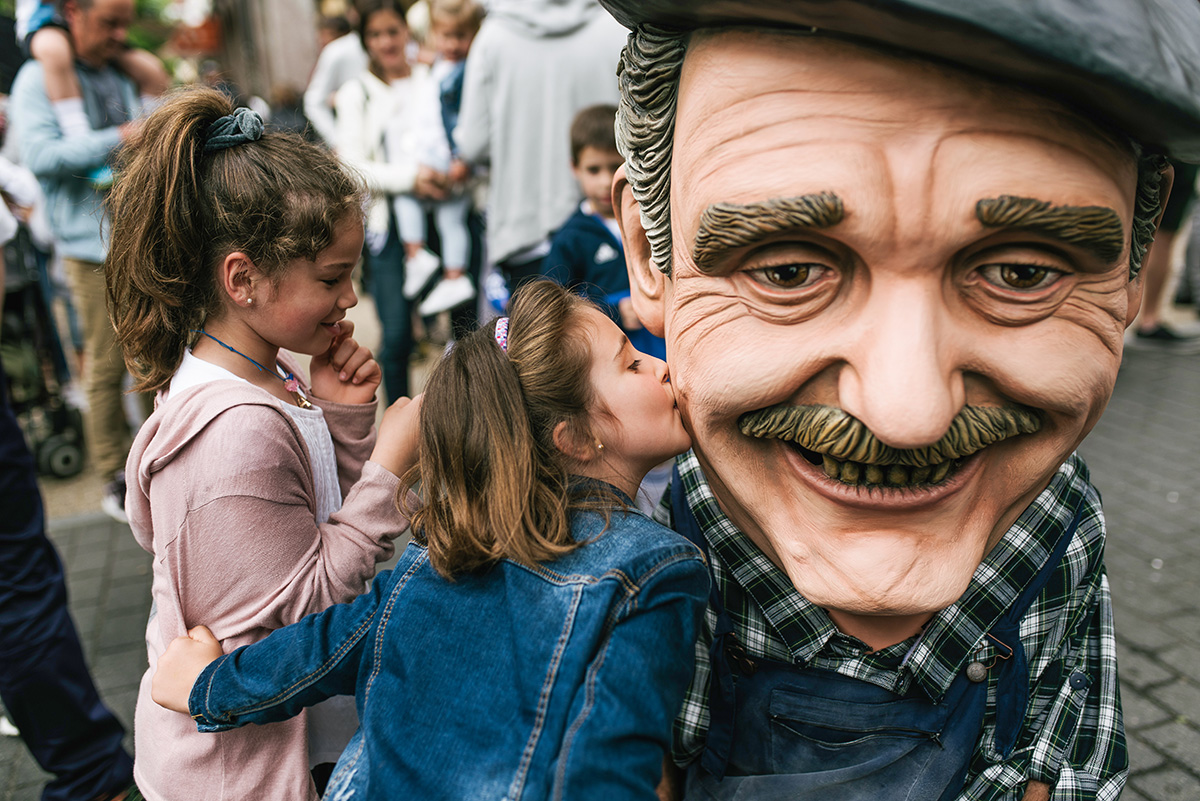
There is nobody from Tolosa who has not experienced a little fear running in front of the big heads (some are still afraid!); but undoubtedly everyone gets excited seeing the giants dance: a work of art that parades through the streets of Tolosa on the most special days, and an increasing number of people come to see it. It isn’t surprising: nobody can believe that they dance the way they do when they are 4 metres tall. Until they see it!
To give you an idea: the giants of Tolosa reach the first balconies in the Old Quarter. The Tolosa Troupe is responsible for this cultural icon of the town: looking after them, training, preparing choreography, rehearsing and taking the giants out to the street alongside the big heads. Preparing involves a lot of work, and this is understandable when you discover that each of the giants weighs between 55 and 60 kilograms and each big head is around 10 kilograms. And there is only one person inside! In 2018 they travelled to Japan, to the Iida Puppet Festival.
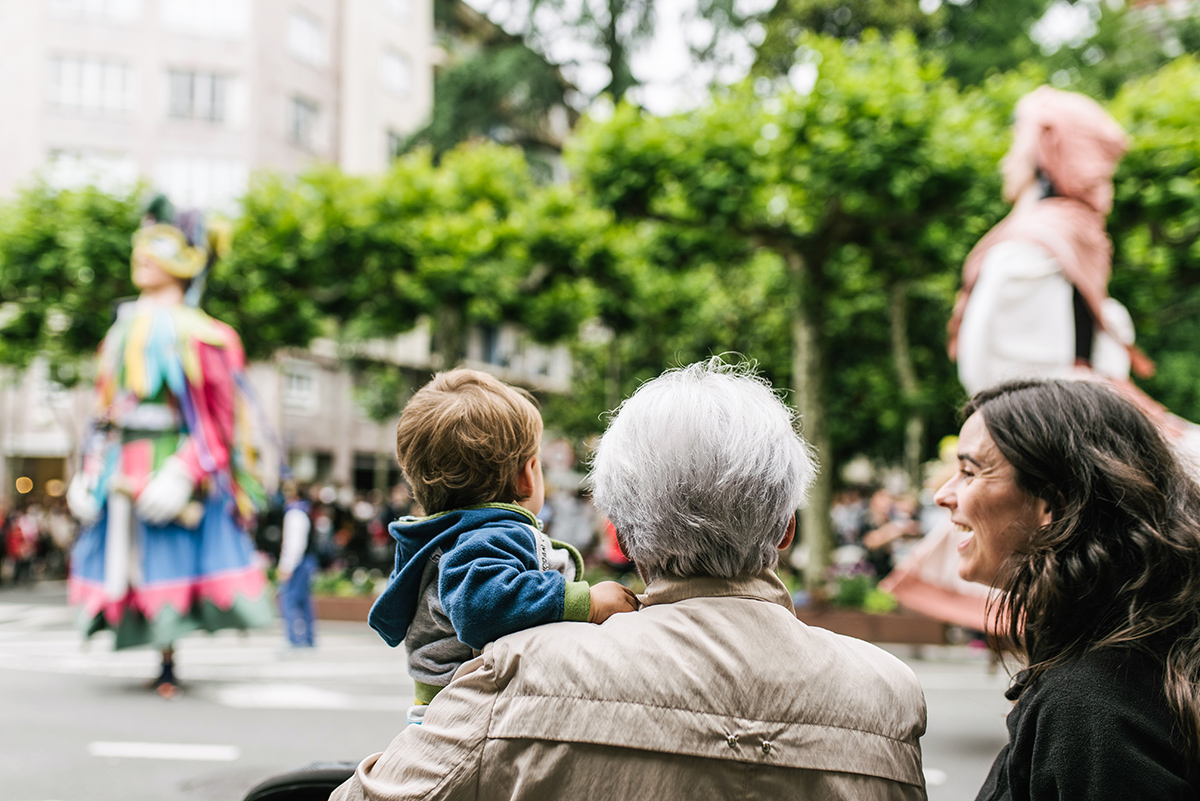
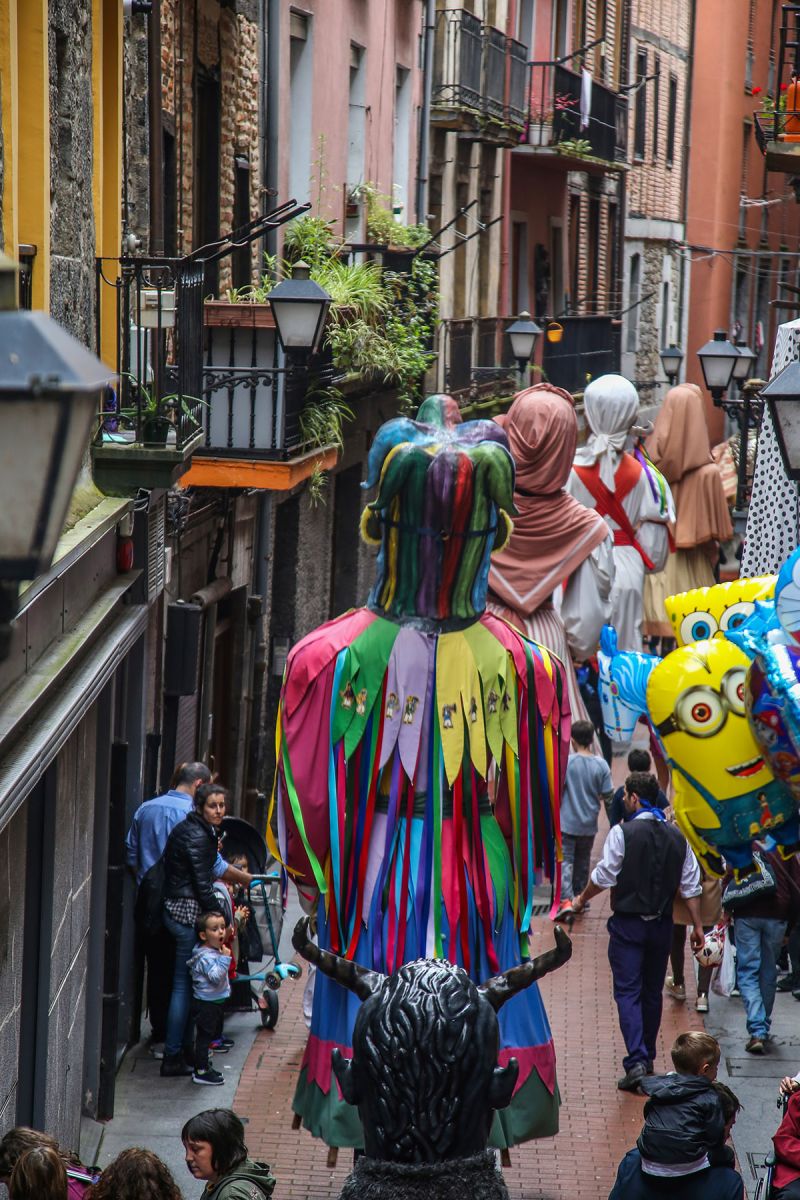
But, where do the giants and big heads come from?
Although there are lots of theories, the most credible one is based on the Catholic Church. It is said that the giants and big heads always went out just before the processions “to honour God”. The giants represented nobility (especially the Kings); the big heads, the people (bearing greater similarity to the devil).
As for Tolosa, the first information dates back to 1657: a man named Francisco de Azpillaga created the giants of Pamplona, but there wasn’t a troupe to take them out. In 1977, there were also some municipal giants, but they were then abandoned. Following that, and up until 1991, there were more modern giants, which were mass produced.
The fact that they were mass produced was not appealing; this led to a group of people from Tolosa deciding to create something new, more original, unique, that had more identity and links to the town: they spent the entire year of 1993 working on the first giants of Tolosa that we now see, with the help of different companies.
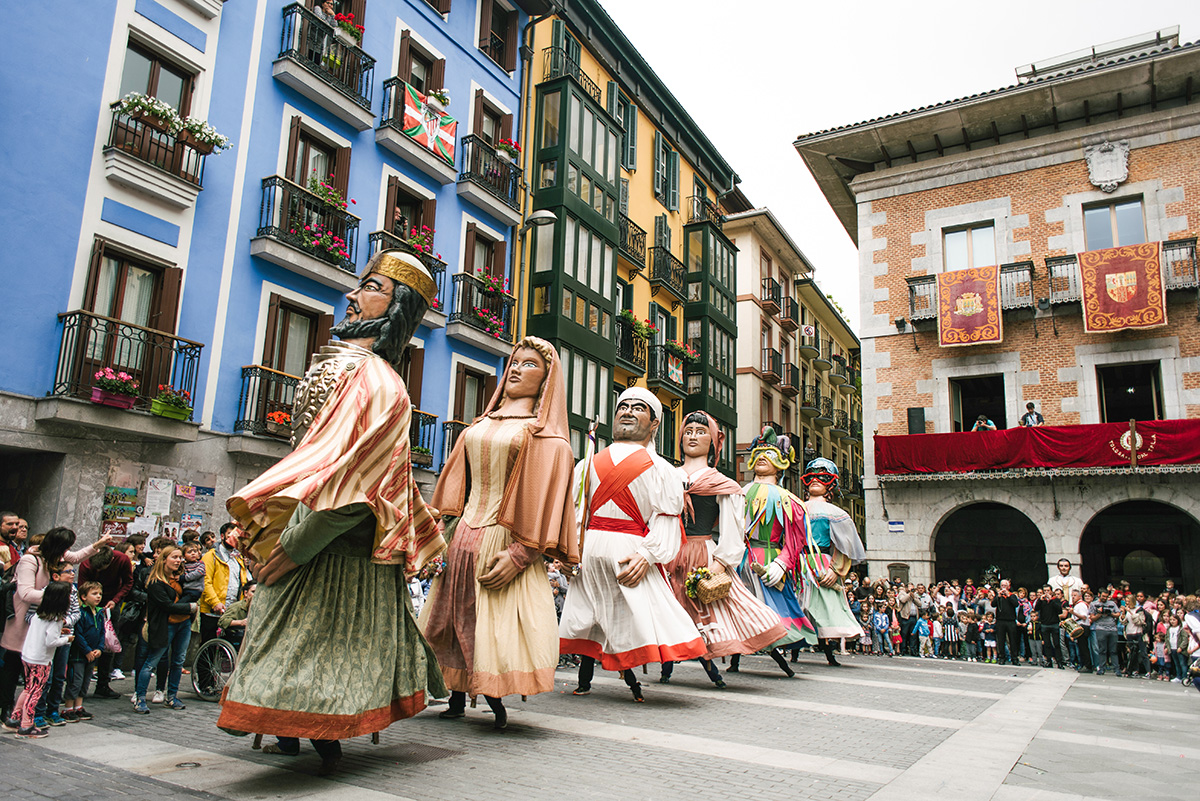
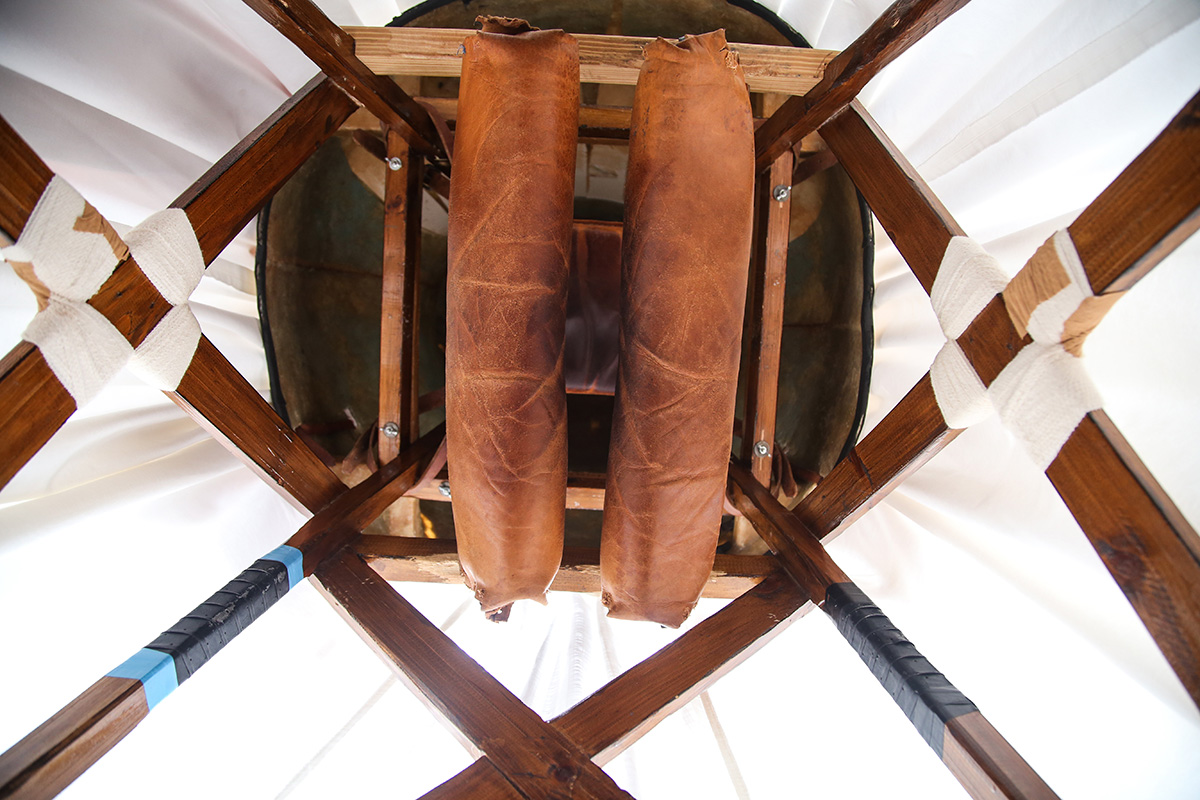
This is how giants look inside!
The troupe (founded by Iñaki Moyua) now has around 35 members, 6 giants and 10 big heads. On 1 May 1995, 4 giants were unveiled (Domenjon González de Andia, Catalina de Tapia, Bordon-dantzari and Neskatila) and 7 big heads (Sorgina, Akerra, Txantxo, Ostegun Gizen, Ostiral Mehe, Txilabas and Calderero).
People began to be more and more attracted to the event, and thus the troupe began to grow: in 2004 they added Peio and Isabelita to the group of giants, in honour of Tolosa Carnival. The big heads of the Veleta and Ero Etxe gastronomic societies were also created. Their intention has always been to create more characters, and that is how the last one was created, in honour of Juanito Lope.
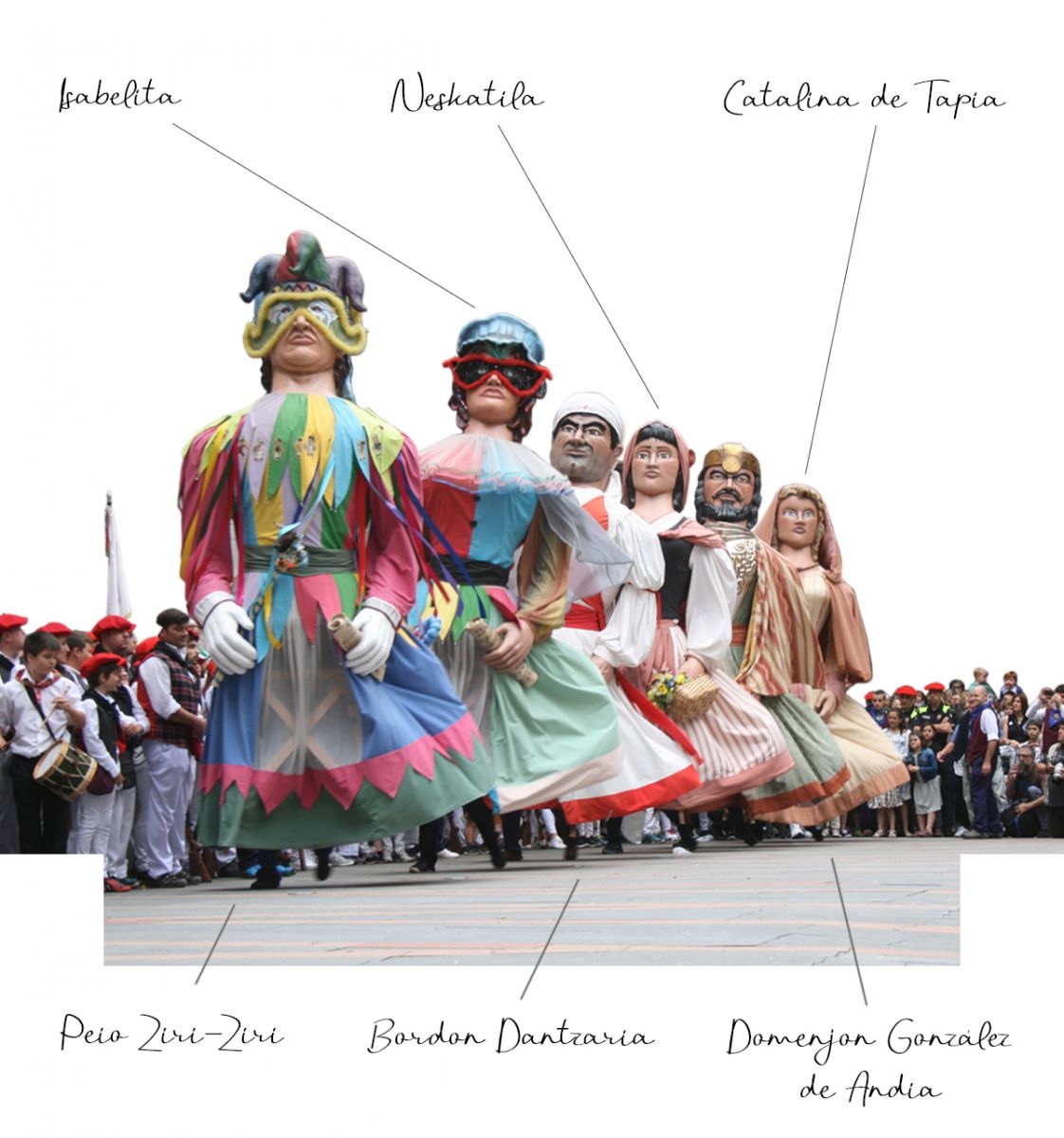
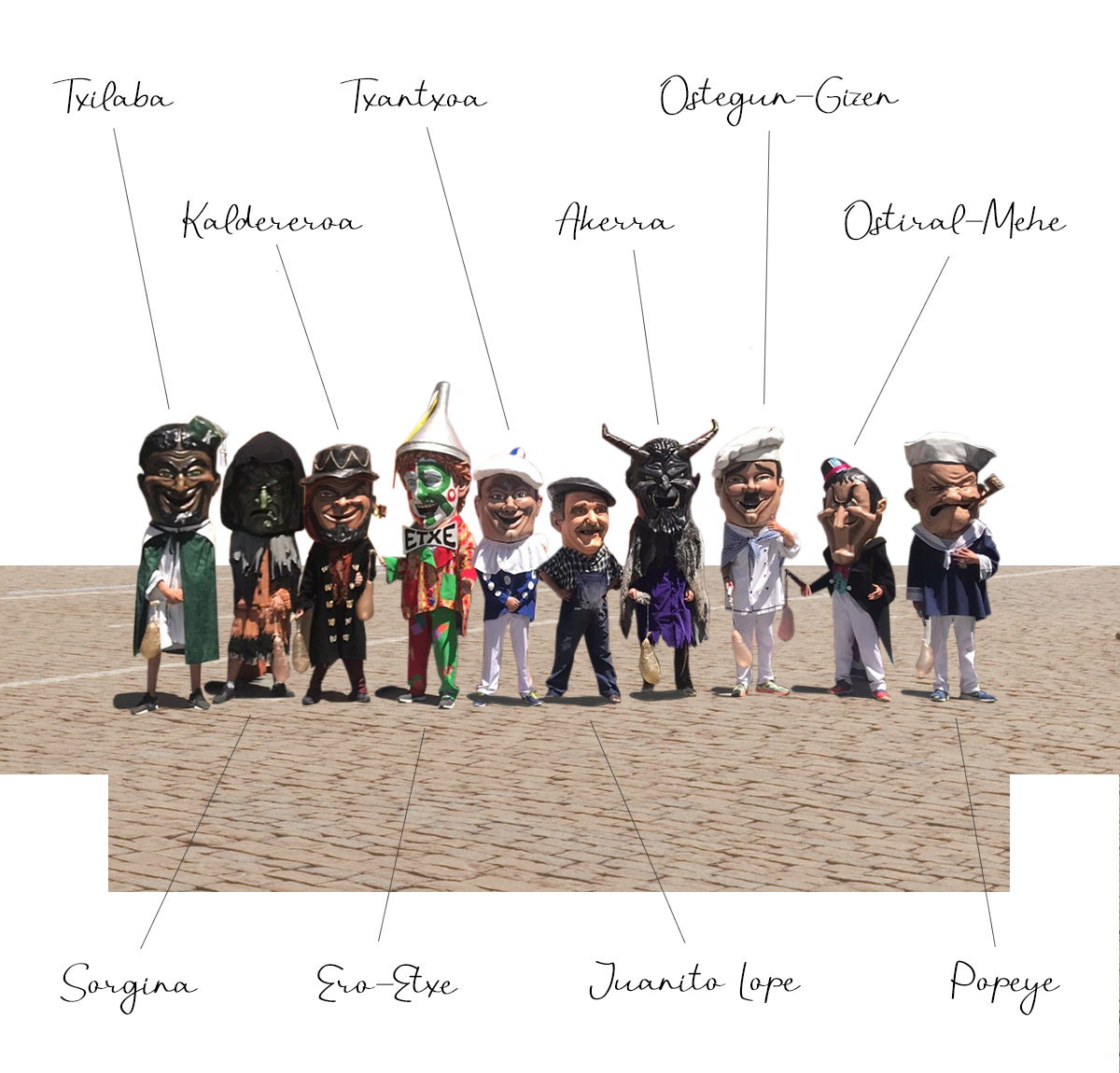
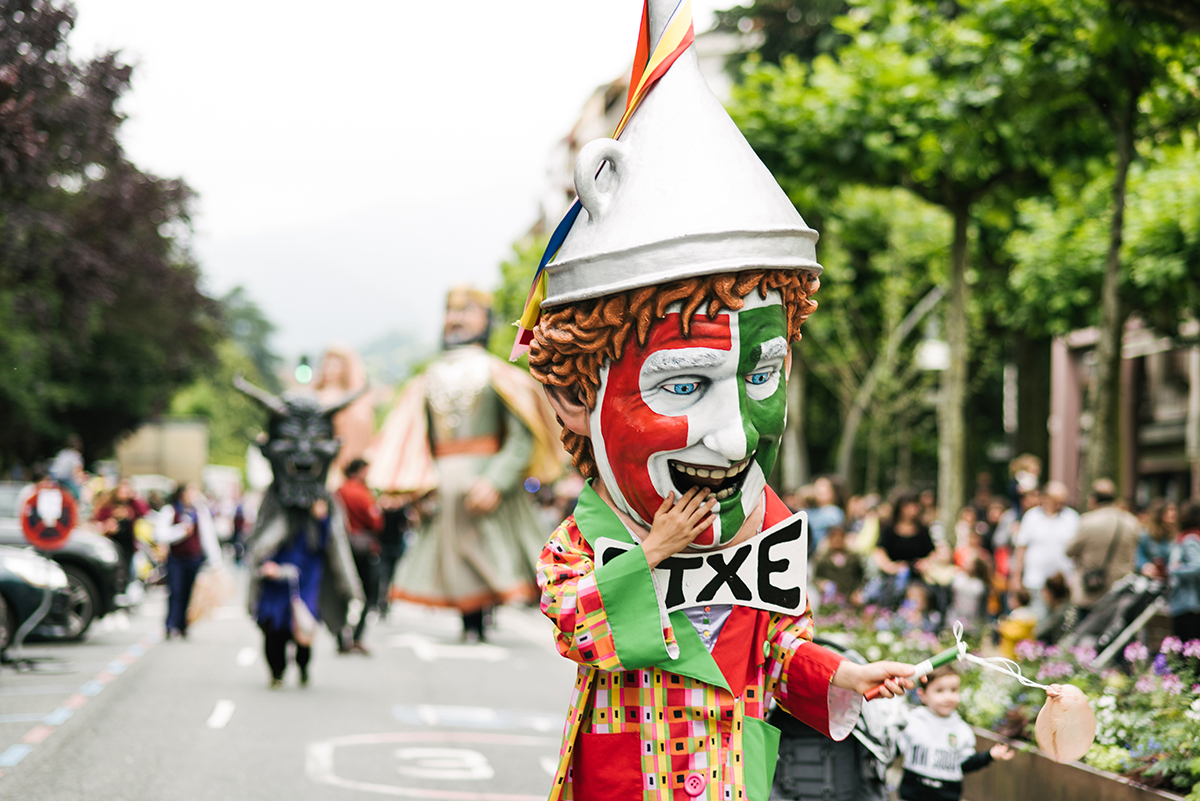
Nowadays, boys and girls appreciate them so much that they decide to give them their lollipops when it comes to setting them aside. It isn’t uncommon to see them running with smaller big heads or imitating the giants.
Many boys and girls dream of experiencing the feeling of being inside dancing one day; and that is due to all the enthusiasm that has always been put in and continues to be put into this beautiful Tolosa tradition, the Troupe of Giants and Big Heads.
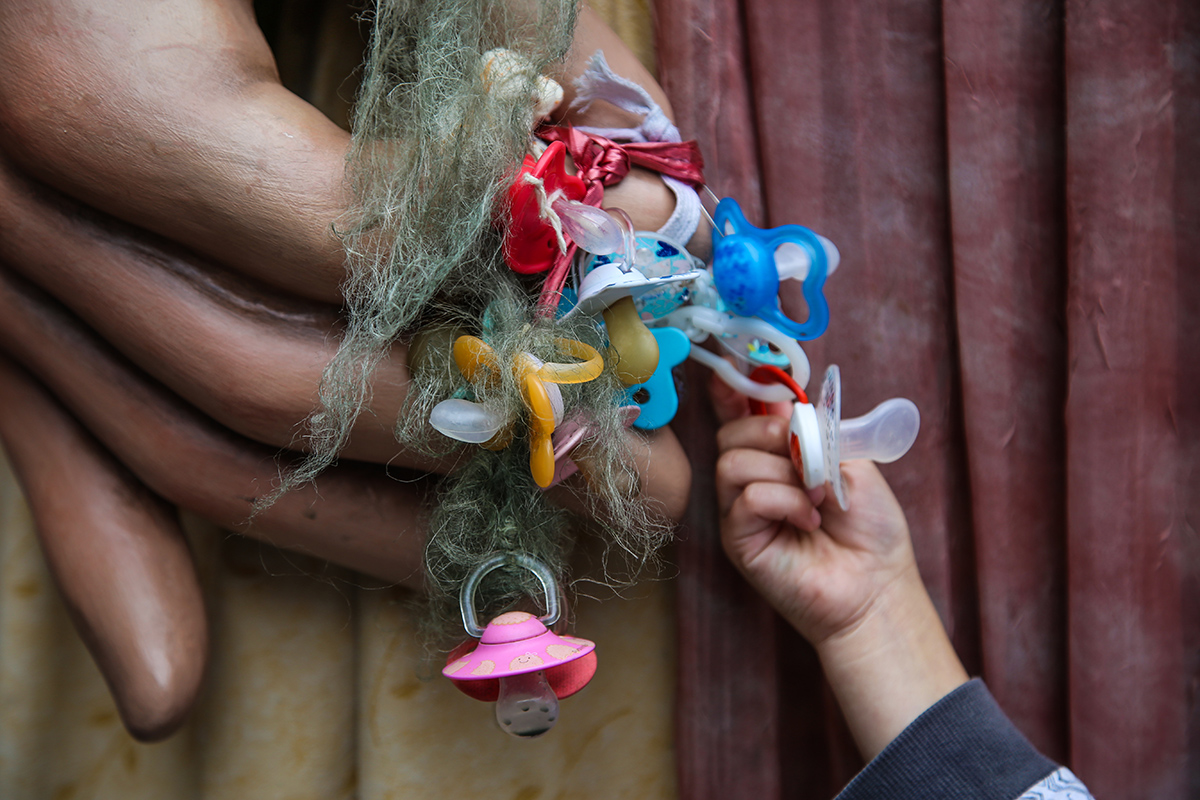
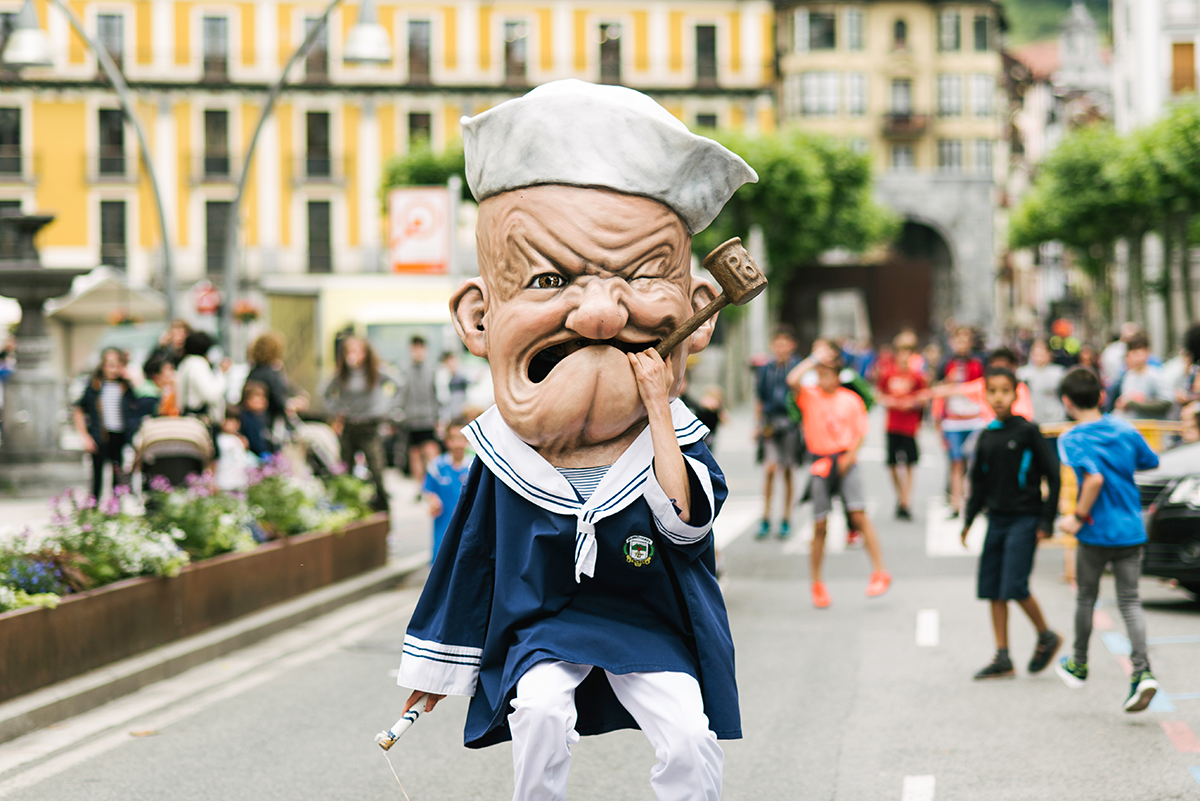
When can we see the Tolosa giants and big heads?
The Tolosa Troupe parades through the streets of Tolosa on special days such as Carnivals (carnivals, regular Saturday...), San Juan (chupinazo -rocket launch- day of the crews, procession), Christmas (processions of Olentzero and Three Kings), the Bean Festival...
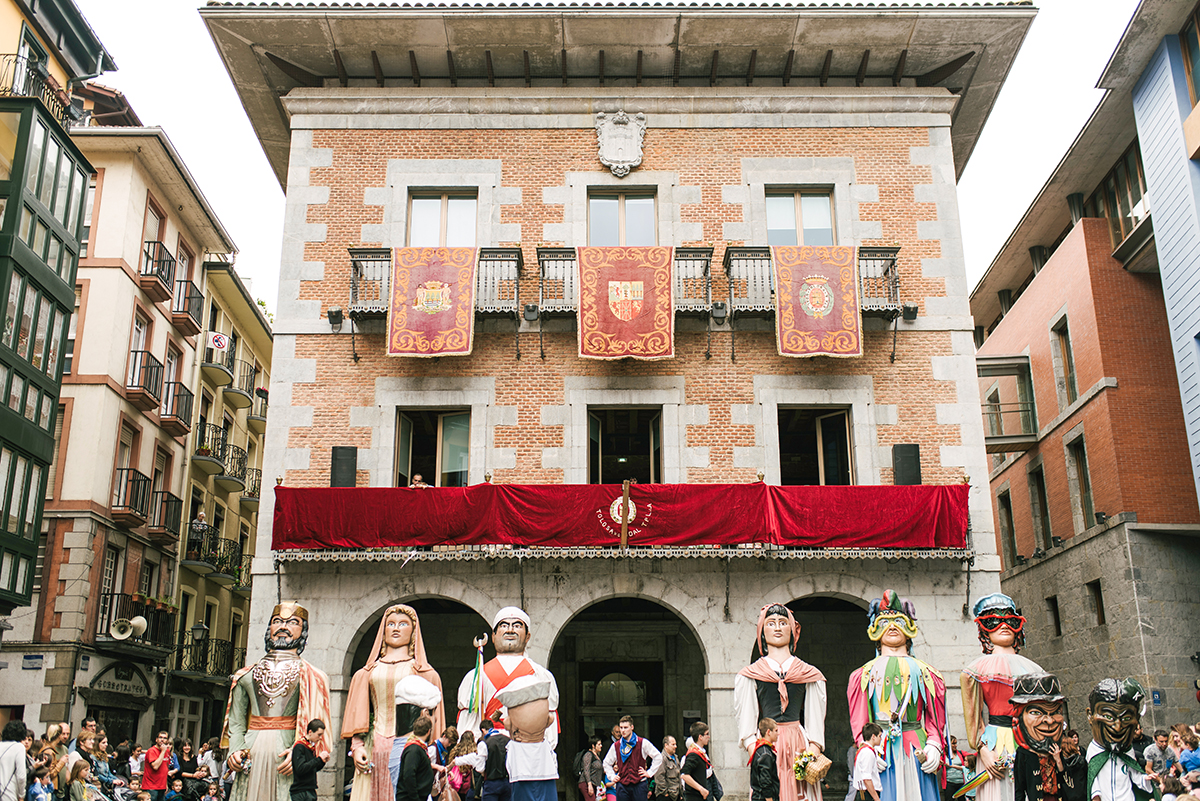
Here is a video where you can see how impressive it is when they start dancing and spinning around without stopping:


.jpg)

